General Hospital
Military
At the outbreak of WW1 in August 1914 Sir Thomas MacKenzie, the New Zealand High Commissioner in London, called a meeting of his fellow countrymen at the Westminster Palace Hotel in Victoria to discuss how best to assist wounded New Zealand servicemen. The formation of the New Zealand War Contingent Association (NZWCA) was the outcome of the meeting, with various committees being formed to deal with specific tasks. An ex-Governor of New Zealand, Lord Plunkett, was elected Chairman of the general committee, while Lady Islington, the wife of another ex-Governor, became head of the Ladies' Committee.
The Association expected that its members would provide comforts for the troops, visit them in hospital and find accommodation for convalescents, and also keep in touch with the soldiers and their relatives. Large consignments of clothing were sent to troops based at Gallipoli and Egypt. However, by 1915, the Association's work had greatly developed as the need for its services increased. Following the Gallipoli campaign, it was thought advisable to establish a hospital specifically for New Zealand casualties.
In August 1914, after the declaration of war, the War Office had requisitioned the Mount Felix estate to house British troops. It contained a large Italianate villa in extensive grounds and had originally been bought by a syndicate intending to convert it into a riverside country club. The principal rooms of the villa were a large reception hall, dining and drawing rooms, and morning, writing and billiard rooms. There were 29 bed and dressing rooms and 6 bathrooms. The out-buildings consisted of a laundry, a dairy farmery, a gardener's house, a coach house, a garage and stabling for 21 horses. The property lay between the approach to the Walton bridge and the River Thames, at Walton-on-Thames. It had two carriage drives with three lodges. By November some 1,200 soldiers were billeted there.
In June 1915, after the British troops had moved out, the War Office offered the estate to the New Zealand War Contingent Association for use as a military hospital. Lady Islington undertook its conversion and refurbishment into a 350-bedded hospital with a large operating theatre.
The New Zealand War Contingent Hospital (although it was generally known as the New Zealand Walton Hospital) was officially opened in August 1915 by the High Commissioner, Sir Thomas MacKenzie, with Lord Plunkett in attendance. It was the first hospital established in the United Kingdom specifically for war casualties from New Zealand, and was pronounced a 'model hospital' by the British military medical authorities. Within two days of its opening, the first patients arrived from Gallipoli. One of the wounded from the campaign was the son of the High Commissioner, who lost his sight.
The cost of the hospital was borne by the people of New Zealand and those New Zealanders living in Britain, with occasional small grants from the NZWCA. The Chief Medical Officer was a New Zealander, while three-quarters of the staff belonged to, or were associated, with New Zealand. The nursing staff were accommodated in the mansion house, while houses in Walton were rented to house male and female administrators.
On 3rd August 1915 the King and Queen, with the Prince of Wales, visited the Hospital and spent the afternoon there, speaking to every soldier. In October 1915 the first death occurred, of a badly wounded soldier, who was buried in Walton cemetery with full military honours. The Gallipoli campaign ended in December 1915 and the New Zealanders were sent to fight in northern France and Flanders.
The 18 acres of grounds at Mount Felix, enclosed by a brick wall, contained gardens with flower beds, fine old trees and green fields. Convalescing servicemen could enjoy walks and, since one side of the grounds ran down to the Thames, boating became a popular pastime.
In January 1916 five large ward huts made from timber and asbestos panels were built on open land lying to the south of Bridge Street, between Oatlands Drive and the River Thames, increasing the bed capacity to 1,040. The huts, which could each accommodate 40 to 50 patients, were linked to the main buildings north of Bridge Street by a covered walkway and a footbridge. Patients with infectious diseases were kept in a special ward. The hutted area, named Anzac Mount, also contained a cookhouse.
By April 1916 some 3,000 New Zealand casualties were being treated in various British hospitals and, in May, a New Zealand Medical Board was established with a view to setting up further hospitals for New Zealand troops. In August a new hospital opened at Brockenhurst in the New Forest in Hampshire, which was designated the No. 1 New Zealand General Hospital. The Hospital at Mount Felix was then renamed the No. 2 New Zealand General Hospital, when it came under the control of the New Zealand Expeditionary Force.Wounded servicemen who arrived in Dover were brought to Mount Felix, while those arriving in Southampton were sent to Brockenhurst.
The Battle of the Somme, which began in July 1916, had greatly increased casualties. More huts were built in October 1916, giving 500 extra beds, and the New Zealand Medical Board acquired a large hotel at Oatlands Park, a short distance west of Mount Felix, to increase accommodation. The hotel was converted for hospital use. Mainly amputees, and medical and TB cases, were admitted there. Workshops and educational classes were established to enable convalescent amputees to learn new skills for future employment outside the army.
As with the other large military general hospitals, there were special departments for X-ray, pathology, massage and electrical treatment, as well as for eye injuries and ear, throat and nose disorders. Accommodation had also been made available for 50 officers.
In 1919 a serious fire destroyed five Hospital marquees and a considerable amount of equipment.
The number of patients being treated was gradually decreased and the No. 2 New Zealand Hospital closed in March 1920 (Oatlands Park Hospital had closed in September 1919). Between them, by the end of the war, they had had nearly 1,900 beds and some 27,000 patients had been treated during their operational life.
Present status (April 2010)
In 1965 the Mount Felix estate, which was owned by the local council, was sold for housing development. However, a fire in 1966 badly damaged the mansion house and it had to be demolished.
A plaque in commemoration of the New Zealanders was rescued from the house and placed in the new Walton Town Hall in New Zealand Avenue. The plaque reads: "This tablet is erected AD 1921 by the inhabitants of Walton-upon-Thames to commemorate their 27000 fellow subjects from the Dominion of New Zealand who wounded or disabled in the Great War 1915-1918 were cared for in the military hospitals at Mount Felix and Oatlands Park. Seventeen of these men lie buried in Walton cemetery. Their bodies are buried in peace but their name liveth for evermore". (When the Town Hall was demolished, the plaque was donated to Elmbridge Museum.)
The only surviving estate buildings are the clock tower, the brewhouse and laundry, which later became a coach house, and the stables, which had been converted into six houses in 1929.
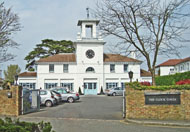
Wacker Chemicals bought the clock tower and coach house in 1979 for use as a local base The buildings have been restored (a replacement bell was cast at the original foundry and rehung in the tower) and are now used as offices by the firm. The development is known as The Clock Tower.
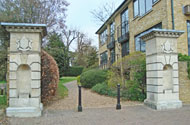
The 1870 gate posts for the original driveway to the estate near the junction of Bridge Street and Oatlands Drive, just before Walton Bridge, still remain. The posts bear the coat-of-arms (now badly eroded) of the Ingram family who bought the estate in 1868. Behind the gate posts is a large housing development.
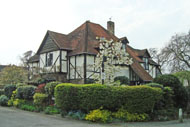
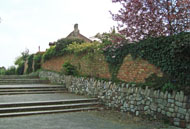
A surviving old house at the east end of Mount Felix (left). A footpath from the foreshore of the river may be bordered with the original wall of the estate (right).
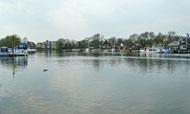
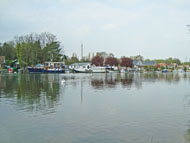
The River Thames seen from the Mount Felix foreshore.
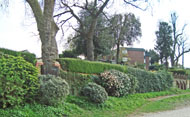
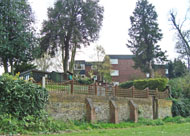
The Mount Felix area seen from the foreshore of the Thames.

The likely site of the hutted extension to the Hospital across Bridge Road.
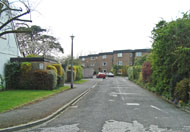
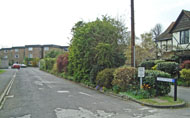
The present Mount Felix - a cul-de-sac.

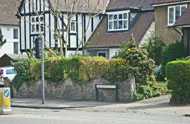
Looking up New Zealand Avenue, a new road built in the 1930s and named in memory of the site's history (left). Houses at the foot of New Zealand Avenue (right).
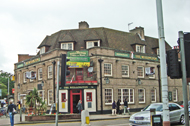
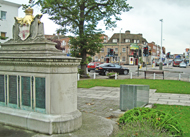
The Wellington public house, once known as The Kiwi, at the top of New Zealand Avenue (left). The Wellington, as seen from the War Memorial opposite (right).
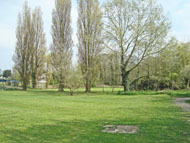
Water meadows near Walton Bridge.
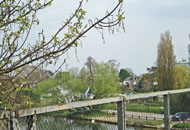
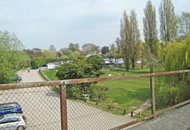
The river frontage as seen from Walton Bridge.
Anzac Day (25th April) commemorates the day that soldiers from the Australian and New Zealand Army Corps (ANZAC) first landed at Gallipoli to fight the Turks.
Since 1920, on this day, a service at St Mary's Church in Walton is held in memory of the New Zealanders who were treated at the Hospital following the campaign. By the west door of the church is the ANZAC Memorial for those who died at the Hospital and are buried in the cemetery adjacent to the church in Terrace Road.
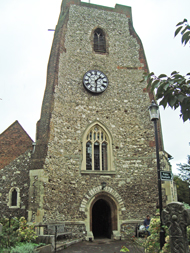
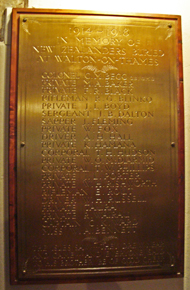
The west front of St Mary's Church (left). The ANZAC memorial plaque inside the west door (right).
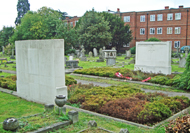
The ANZAC memorials in the graveyard.
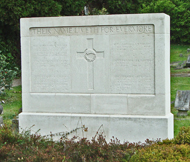
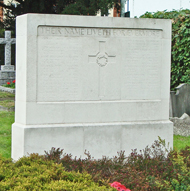
The memorials list the names of the New Zealanders who died at Mount Felix.
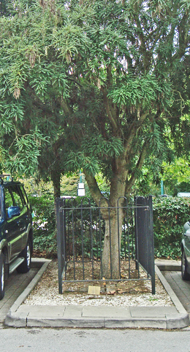
A memorial tree planted in what is now the car park of the nearby Homebase store.
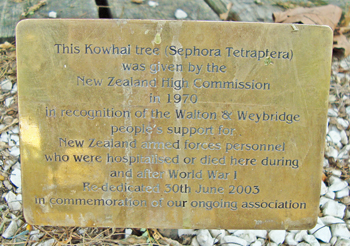
The memorial plaque by the foot of the tree.
Smith J 1996 Monograph No. 58. Auxiliary and Military Hospitals in Weybridge and Walton during the First World War. Walton and Weybridge Local History Society.
Stonebanks JA 1978 Mount Felix. Walton on Thames. Walton and Wybridge Local History Society.
http://1914-1918.invisionzone.com
http://blog.simonholdings.com
http://find.natlib.govt.nz
http://freepages.genealogy.rootsweb.ancestry.com
http://lh.matthewbeckett.com
http://mountfelixtapestry
http://rcnarchive.rcn.org.uk
www.elmbridge-online.co.uk
www.nzetc.org
www.surreyherald.co.uk
www.walton-on-thames.org (1)
www.walton-on-thames.org (2)
Return to home page